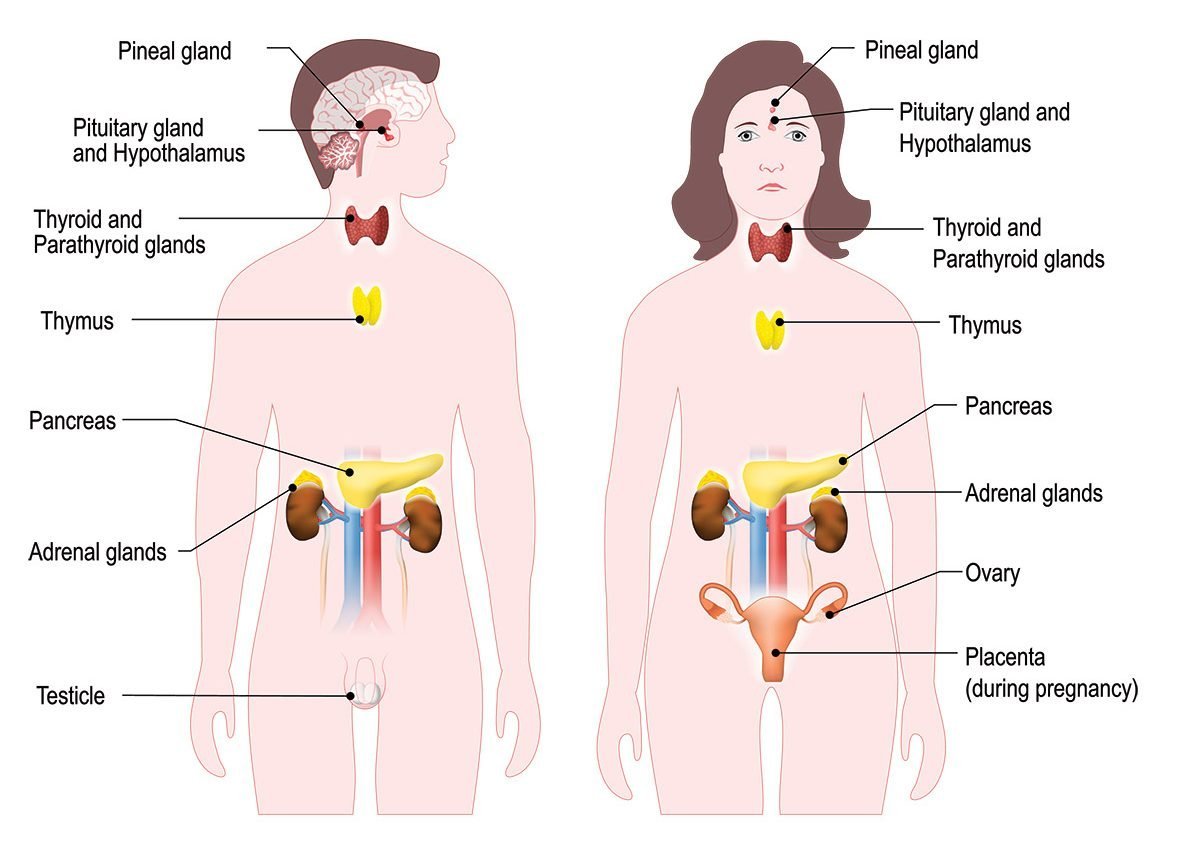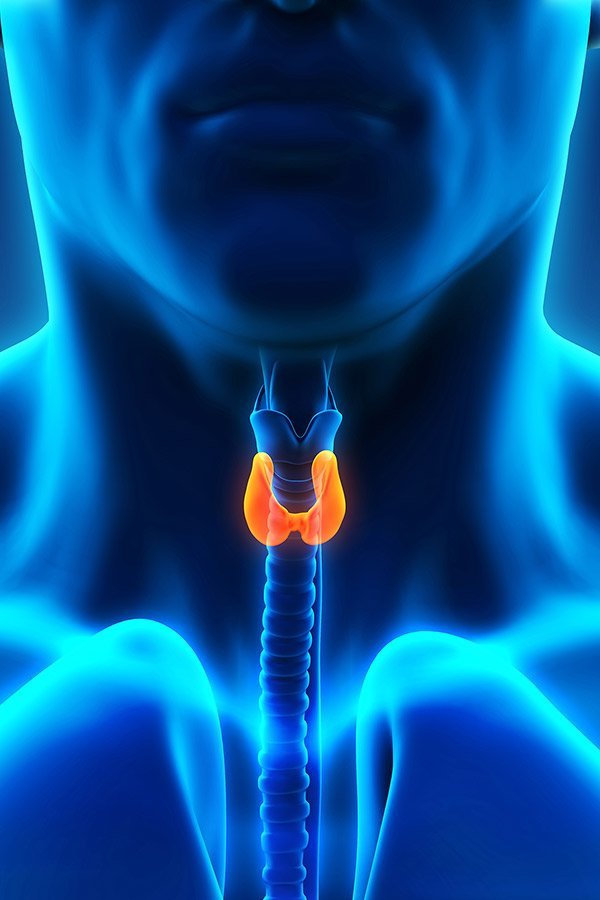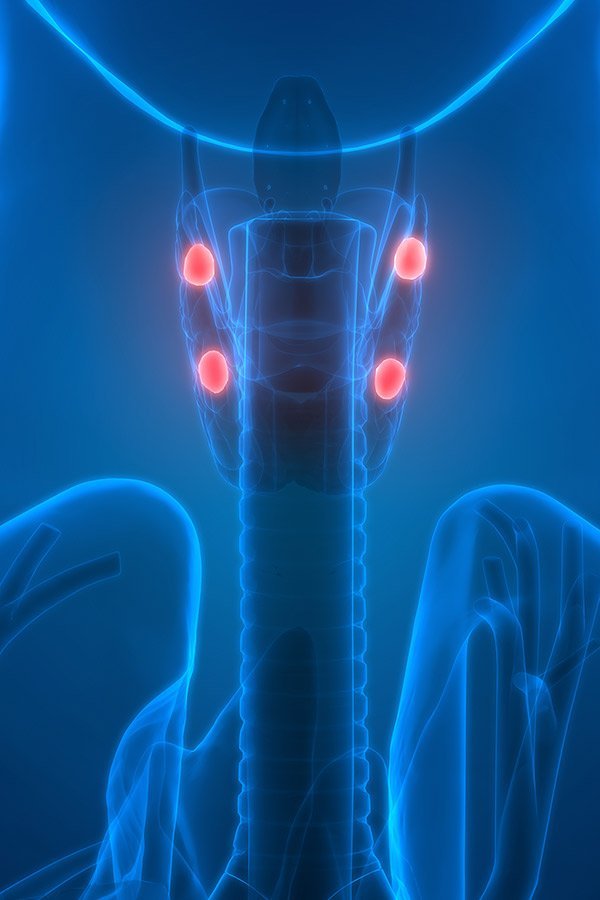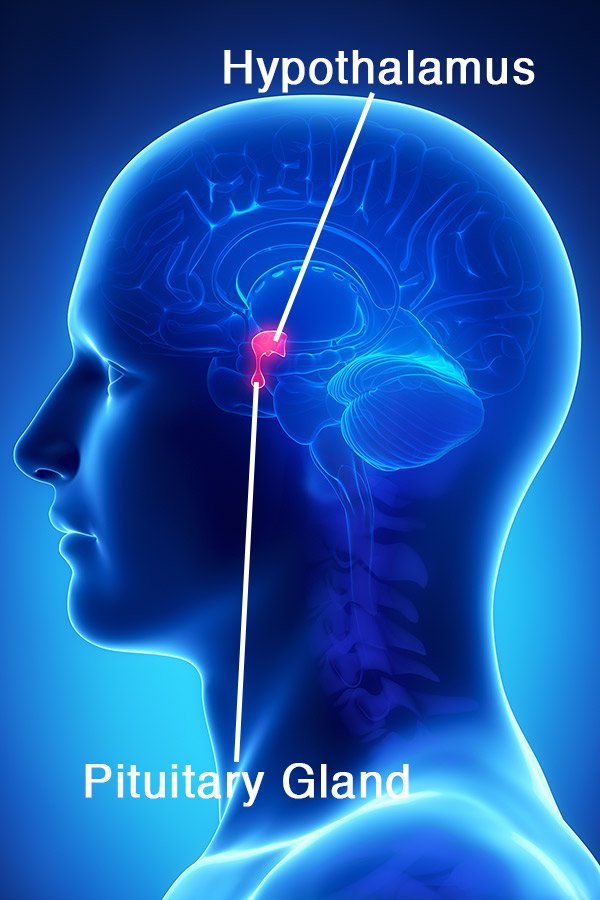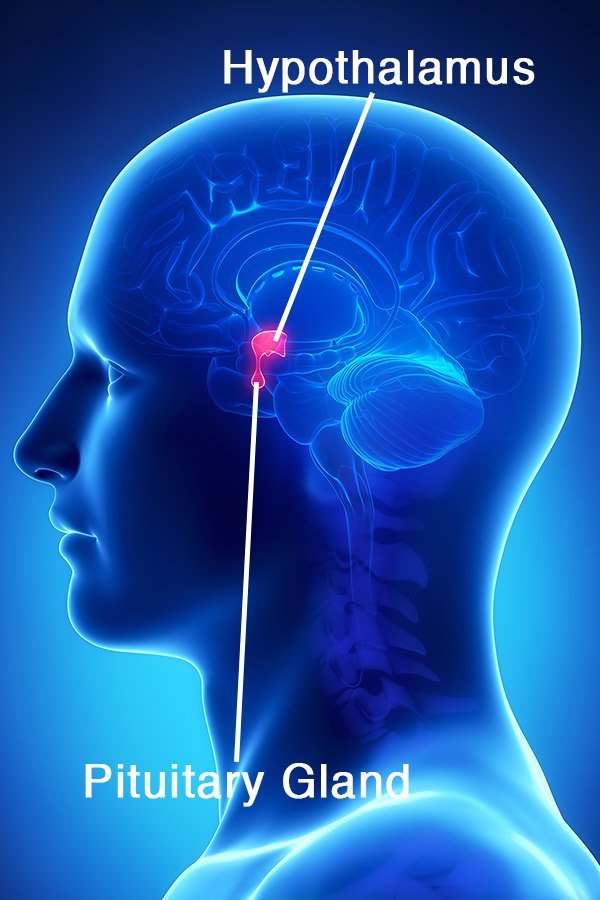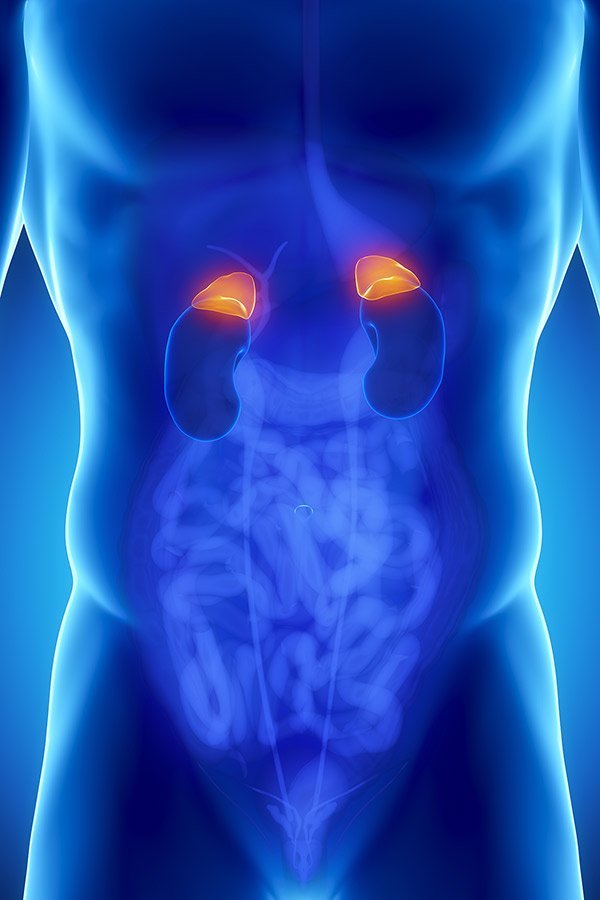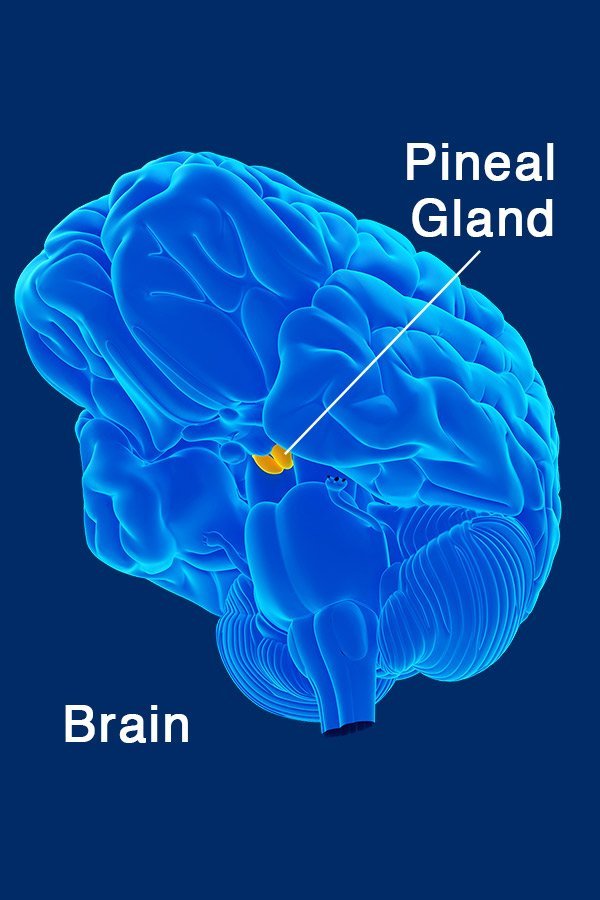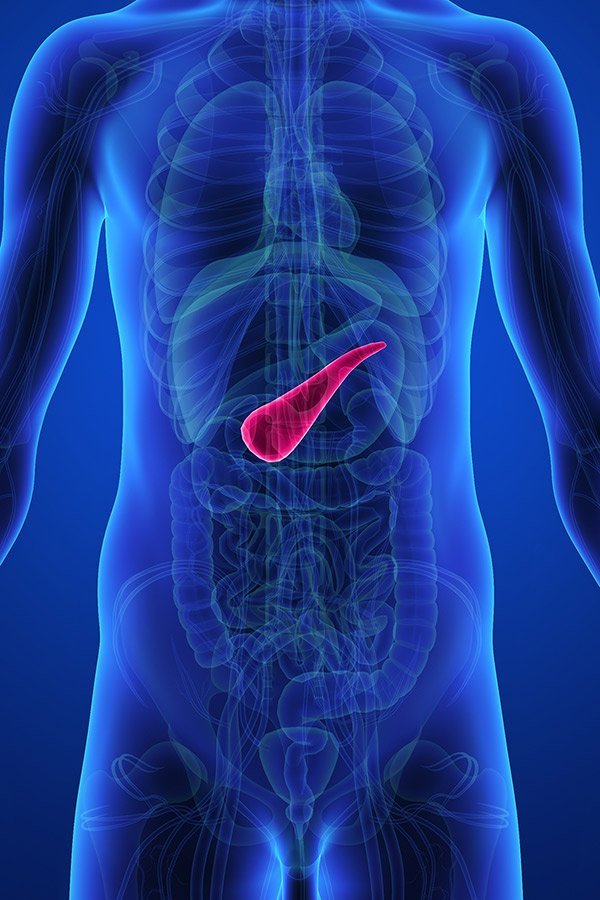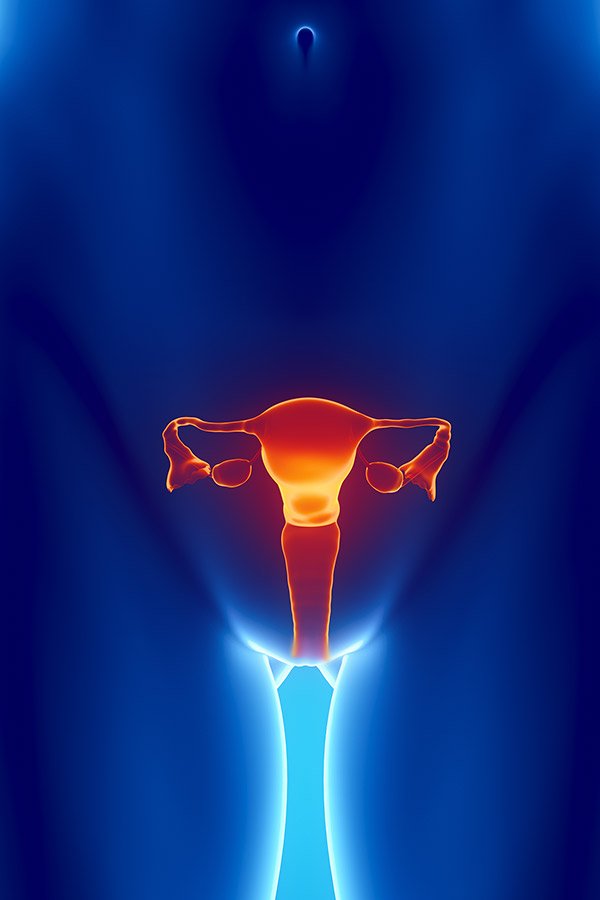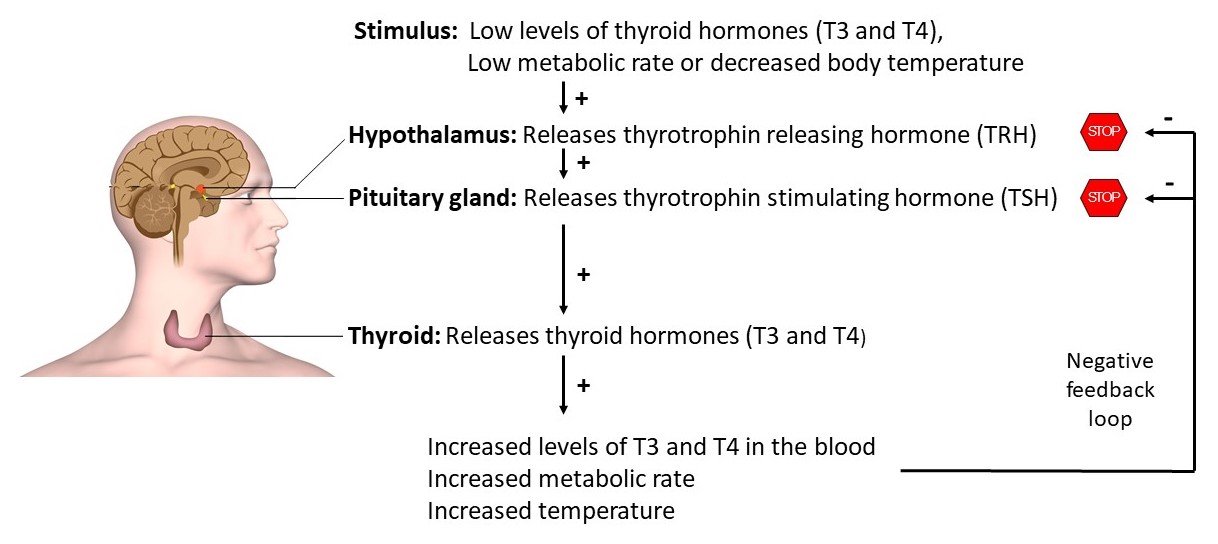The endocrine system is the body’s communication network. It is made up of specialised glands, which make and release hormones into the blood.
Hormones are chemical messengers that travel through the blood to different parts of the body. They are signals that tell the body to act in a certain way. Hormones are recognised by their target receptors in a “lock and key” system. Each hormone (key) fits exactly into its receptor (lock). Only those parts of the body that have the receptor (lock) can respond to the hormone (key). This is why hormones affect some parts of the body, but have no effect on others.
Hormones control a range of different functions in the body. These include:
- Bone and muscle health
- Heart function and blood pressure
- Metabolism – how foods are broken down in the body to make energy
- Sexual development and reproduction
- Growth and development
- Immune system regulation
- Mood
- Attention, learning and memory
- Stress responses
- Sleep cycles
- Appetite and body weight
When hormone levels are out of balance, the body doesn’t function normally. This is when problems or diseases can develop.
Endocrine glands are those parts of the body that make and release hormones in response to different situations and signals, that can come from both inside and outside the body.
Some examples include:
- After a meal, the hormone insulin is released. Insulin helps keep blood sugar levels in a normal range.
- In response to stress, the hormone adrenaline is released. Adrenaline signals different parts of the body to prepare for, or escape from, a threat.
- Across the menstrual cycle, the hormones progesterone and estrogen are released. These hormones help prepare the uterus (womb) for pregnancy.
A certain amount of hormone is needed to keep the body functioning. When there is too much or too little hormone, problems and ill health can occur. This hormone imbalance can lead to endocrine diseases or conditions.
Discover The Endocrine Glands
Hormone Regulation
Hormone levels are constantly regulated to maintain health. Hormones need to be kept in balance to keep the body working normally. If hormones get out of balance, endocrine diseases and conditions can develop.
Self-Regulation
Some endocrine glands work alone to regulate hormone levels. These glands work in a similar way to a thermostat on a heater, turning on and off to keep the temperature constant. These glands make more hormone when levels drop too low, and stop making hormone when the levels return to normal.
Feedback Loops
Some endocrine glands work together to regulate hormone levels. This often occurs in a feedback loop, where hormones from one gland signal another to start (or stop) making hormones.
An example of a negative feedback loop is the system that controls the levels of thyroid hormones.
In response to low thyroid hormone levels, or a low metabolic rate:
- The hypothalamus releases Thyrotrophin Releasing Hormone (TRH).
- TRH signals the pituitary gland to release Thyroid Stimulating Hormone (TSH).
- TSH then signals the thyroid to make and release thyroid hormones. This increases the level of thyroid hormone in the blood, which act to increase metabolic rate.
- When thyroid hormones reach a threshold, the hypothalamus and pituitary stop making TRH and TSH. This negative feedback loop switches the system off to keep thyroid hormones within a normal range.
Page last reviewed on 2 Mar 2023


